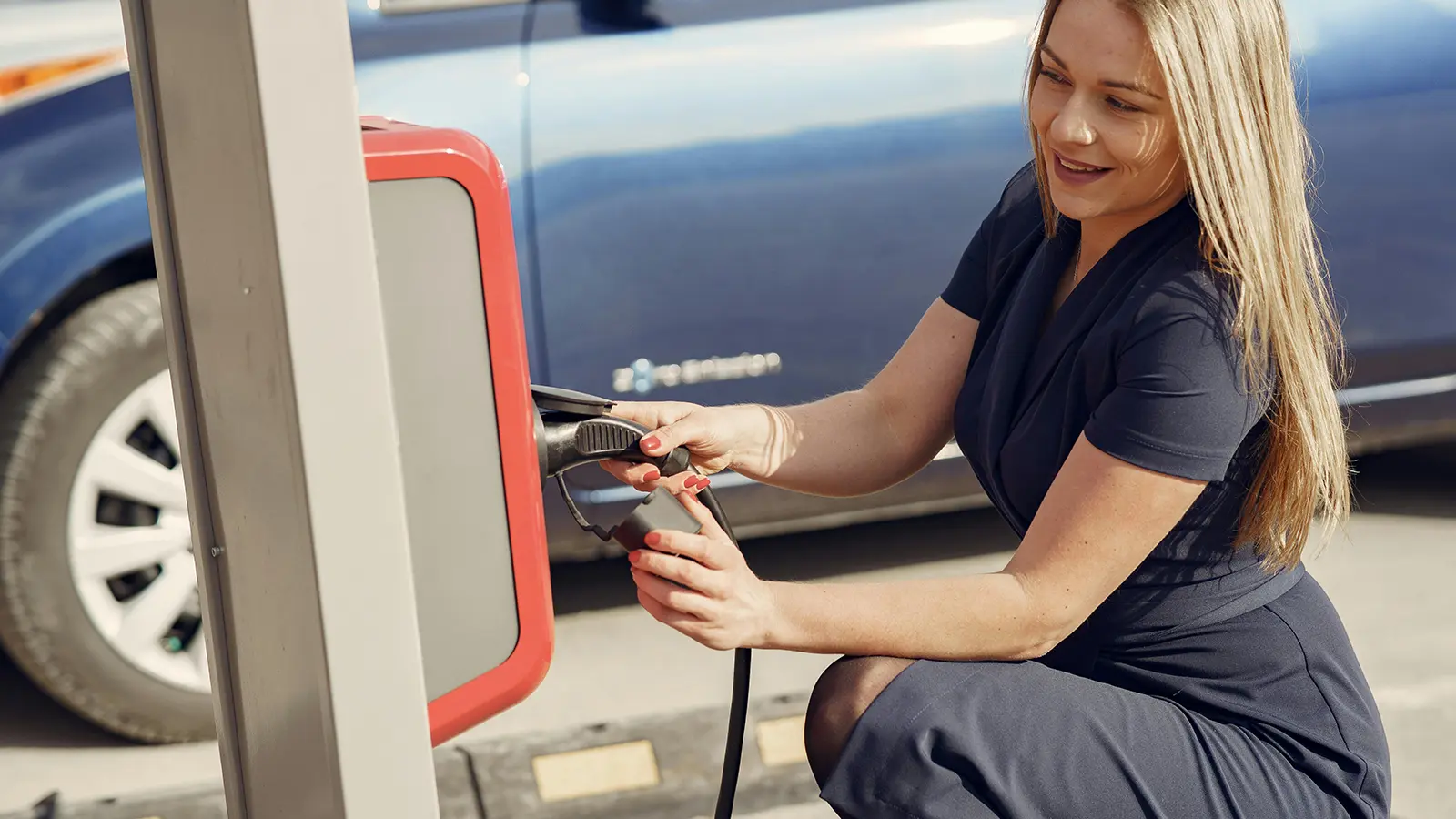A Beginner’s Guide to EV Charging
Electric vehicles (EVs) are changing the way we think about driving, and that includes how we “refuel.” If you’re new to EVs, charging might seem unfamiliar or even confusing, but it’s actually simple once you understand the basics. This guide will walk you through what EV charging is, how it works, and what you need to know to confidently charge at home, at work, or on the road.
EV Charging Basics: What It Means to “Charge” an Electric Car
EVs run on electricity stored in a battery, which powers the electric motor. Charging is the process of transferring energy from the grid (or another power source) into that battery, similar to plugging in a smartphone or laptop, but on a much larger scale.
How It Works
- You plug your EV into a compatible charger.
- Electricity flows from the power source through the charger and into your car’s battery.
- A charging control system manages the flow of electricity to keep everything safe and efficient.
Just like gas stations vary in speed (think regular vs. premium pumps), EV charging stations offer different levels. More on that shortly.
Charging Equipment: What You’ll Use to Plug In
There are two main components to EV charging:
- The EV Supply Equipment (EVSE): This is the charger or station that delivers power to your vehicle.
- The Connector/Plug: This is the cable and port interface between the charger and your EV.
Charging can happen at home, work, or public stations, each with its own equipment and speed.

Where You Can Charge
1. At Home
Most EV owners do the majority of their charging overnight at home using:
- A standard wall outlet (Level 1)
- A faster 240-volt home charger (Level 2)
2. At Work
Many offices offer charging stations in parking garages or lots, usually Level 2 units for daytime top-offs.
3. On the Road
Public charging stations are available nationwide and are especially common along highways, shopping centers, and in urban areas.
Types include:
- Level 2 (moderate speed)
- DC Fast Charging (very high speed)
Use apps like PlugShare, ChargePoint, or Google Maps to find nearby chargers.

Understanding Charging Speed
Electric vehicles can be charged at different speeds depending on the level of charging and equipment used. Here’s a breakdown of the three main types:
- Level 1 Charging:
- Power source: Standard 120V wall outlet
- Charging speed: Adds about 3 to 5 miles of range per hour
- Best for: Emergency use or slow overnight charging
- Level 2 Charging:
- Power source: 240V outlet or hardwired charging unit
- Charging speed: Adds about 12 to 40 miles of range per hour
- Best for: Daily home or workplace charging
- DC Fast Charging:
- Power source: High-powered public charging stations using direct current
- Charging speed: Adds up to 80 percent charge in around 30 minutes
- Best for: Road trips or quick top-ups during travel
Charging speed varies depending on your vehicle’s capabilities, battery size, and the power output of the charger you’re using.
Charging Levels at a Glance
If you’re new to EV charging, it’s helpful to see the three main levels side by side. This quick chart gives you the basics. For a full breakdown with power sources, speeds, and best-use tips, see our Level 1, 2, and 3 Charging Explained guide.
How Long Does It Take to Charge an EV?
Charging time depends on four main factors:
- Battery size (measured in kilowatt-hours or kWh)
- State of charge (how empty or full the battery is)
- Type of charger used (Level 1, 2, or DC Fast)
- Maximum charge rate that your car supports
Example:
- A 60-kWh battery at a Level 2 charger (7.2 kW) takes about 8 hours to go from empty to full.
- The same battery on a DC fast charger (150 kW) can charge up to 80% in 30–45 minutes.
Is Charging Expensive?
EV charging is almost always cheaper than filling up a gas tank. On average:
- Home charging costs about $0.04–$0.06 per mile
- Public Level 2 charging ranges from free to a few dollars per hour
- DC fast charging can be more expensive but still costs less than gasoline per mile
Many utilities offer off-peak pricing, and there are federal and state incentives that may reduce the cost of charger installation.
Helpful Tools and Apps for EV Charging
EV drivers benefit from a wide range of tools to manage charging:
- Navigation apps that include EV range estimates
- Charging station locators (like ChargeHub, EVgo, or PlugShare)
- Vehicle apps to set charging schedules and monitor progress
- Home energy monitors to track usage and reduce costs
Some EVs even allow you to precondition the cabin or battery before driving while still plugged in, saving energy and improving range.
Final Thoughts
Charging an EV may be a new habit, but it’s easy to get the hang of. Most drivers charge at home overnight and use public stations for longer trips or top-ups. As infrastructure expands and technology improves, charging will only get faster and more convenient.
Take the Next Step in EV Charging
Continue exploring EV Charging fundamentals:
Discover Next: Level 1, 2, and 3 Charging Explained→












